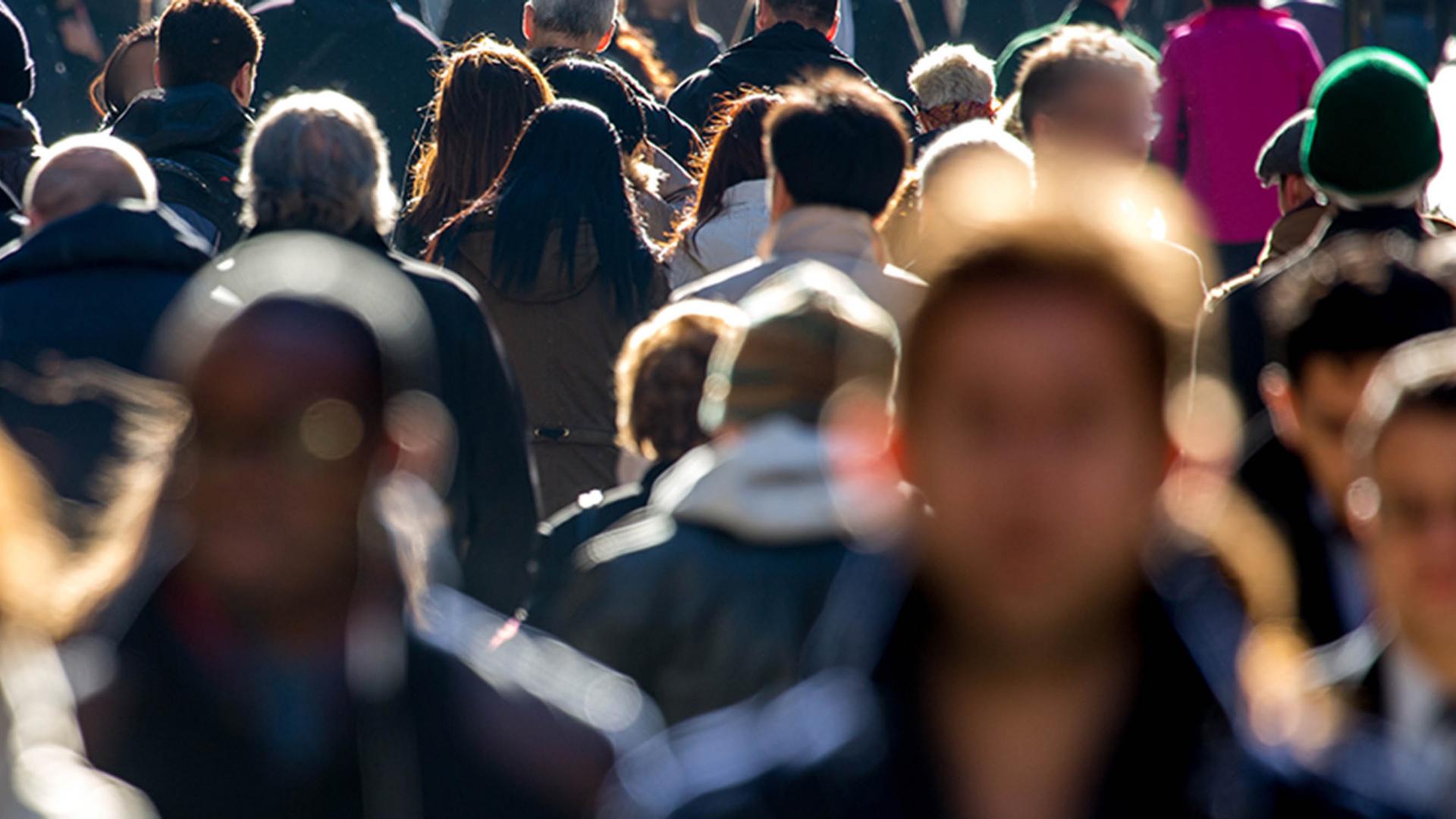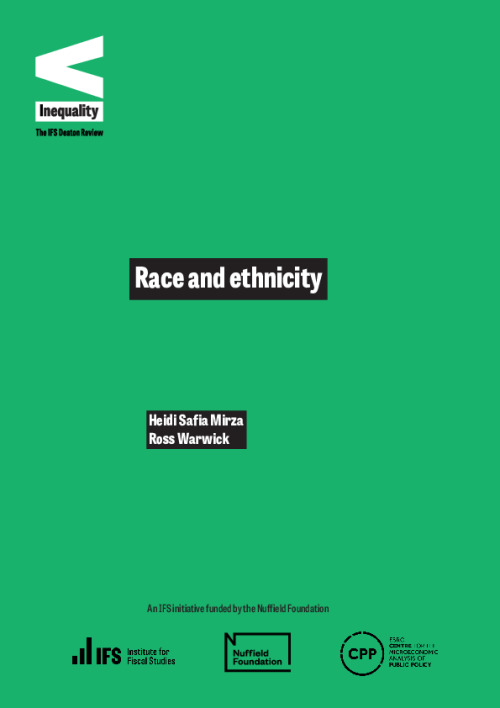The IFS Deaton Review of Inequalities
This chapter considers inequalities across ethnic groups in the United Kingdom and finds that there is no single story of advantage or disadvantage. Ethnic inequalities are complex and characterised simultaneously by continuity rooted in historical origins and conditions, and rapid change fuelled by new and changing populations and opportunities. Continuity and change are also reflected in very different patterns of inequality across (and within) minority groups, generations, and outcomes. The populations of the UK’s diverse minority ethnic groups today arrived at different times, from different countries and cultures, and equipped with different levels of educational and human capital. Perhaps unsurprisingly, these groups now show varied fortunes. Some are characterised by high levels of average qualifications, income and wealth, while others are persistently disadvantaged, faced with elevated levels of poverty and unemployment. Alongside different levels in outcomes are varied trajectories, both within and across generations. Within groups, there are less-explored, intersectional contours of difference, along the lines of gender, geography and class. Research and policy must acknowledge this diversity and complexity in order to inform effective policy prescriptions going forwards.
- The UK has become rapidly more ethnically diverse in the past few decades. From 1991 to 2011, the White population of England and Wales grew by less than 2% – including rapid growth in White migrant populations – while all other ethnic groups combined grew by 166%. While migration flows are a crucial part of this story, increasingly ‘natural growth’ drives the continued trend towards greater ethnic diversity, and the results of the UK’s latest censuses will highlight again the size and diversity of the country’s minority ethnic population. In 2011, nearly one-fifth of the population of England and Wales identified with an ethnic group other than the White British majority; in comparison, the populations of Scotland and Northern Ireland exhibit significantly less ethnic diversity.
- Official UK datasets collect information on respondents’ self-reported ethnic group. This is a flawed but nonetheless practical way of understanding group differences. Ethnic groups as collected in official UK data combine different aspects of individual identity, and many of the categories are informed by historical ‘ideas of Race’. The extent to which individuals relate to their ethnicity and the stability of their ethnic identity varies substantially. Though this creates challenges for research and interpretation, the availability of ethnic identity information in UK data permits a better understanding of inequalities and group differences than is possible in many other contexts.
- Ethnic groups in England and Wales have very different characteristics to the White British majority that matter for inequalities. A majority of Black African individuals are first-generation immigrants, while most Black Caribbean individuals were born in the UK. The ethnic minority population is much younger than the population as a whole. And despite patterns of dispersion over time, most ethnic groups are disproportionately concentrated in cities, with 58% of the Black population of England and Wales residing in London as of 2011, for instance.
Rapid improvements in educational outcomes for many students from minority ethnic groups are one of the most striking educational trends in recent years. In England, GCSE attainment improved particularly rapidly for Bangladeshi, Pakistani and Black African students in the past two decades, with Bangladeshi students going from a 9 percentage point attainment gap compared with White British students in 2004 to a 6 percentage point advantage in 2019. Students from almost all minority ethnic groups are more likely to attend university than their White British counterparts. However, significant attainment gaps exist for these students once at university.
- Labour market outcomes show varied fortunes across and within groups over time. Overall, ethnic employment gaps have closed substantially since the 1990s, and especially among men. In the 1990s, Pakistani men were nearly 20 percentage points less likely to be in employment than the White majority; by 2019, this gap was closed to 2 percentage points. Despite this, statistical analysis that controls for individual characteristics continues to find large, unexplained employment gaps for many minority groups. Discrimination, preferences, norms and local opportunities may play differing roles for different groups. Median earnings gaps appear to be more persistent, and even where educational and occupational successes have facilitated faster relative wage growth (such as for Indian men), unexplained wage penalties remain.
- Lower rates of employment, larger households, and higher housing costs for Pakistani, Bangladeshi and Black households imply lower standards of living than labour market earnings alone suggest. While redistribution via taxes and benefits push in the other direction, poverty rates among minority ethnic individuals are much higher than the White British majority – and even more so among children. Pre-pandemic, more than half (52%) of Bangladeshis, including more than two-thirds of Bangladeshi children (67%), were in poverty after housing costs, for instance, even after large falls in the preceding decades.
- Alongside these material inequalities, minority ethnic individuals in the UK exhibit long-term upward social mobility – even more so than among the White population. Educational attainment appears to be a key part of this story and this pattern sets the UK apart from many European countries. However, occupational and income mobility is not always commensurate with qualifications for minority ethnic groups in the same way as for the White majority.
- Though pre-pandemic ethnic health inequalities show a varied picture, the health impacts of the COVID-19 pandemic have so far been extremely disproportionate for minority ethnic groups: as of the end of 2021, age-standardised mortality rates were 3.6 times higher for Bangladeshi men than for White British men, and twice as high for Black men than for White British men. These patterns draw attention to issues such as differences in working conditions and institutional trust – the latter most clearly illustrated by stark gaps in vaccine uptake.
- Government policies acknowledge ethnic inequalities and attempt to address them explicitly by targeting discrimination and promoting more equal representation. Both are likely to play important roles in outcomes for minority ethnic individuals, even if our understanding of the precise mechanisms, and how these vary in importance in different settings, is limited. However, the UK evidence available suggests that discrimination is persistently prevalent in hiring practices, and that representation of ethnic minorities in some institutions lags their population share substantially, suggesting that more progress is needed in these areas.











